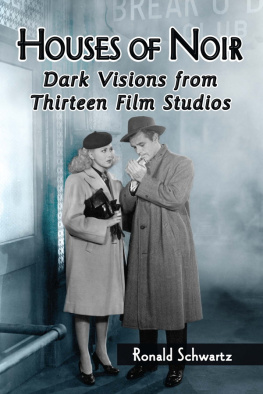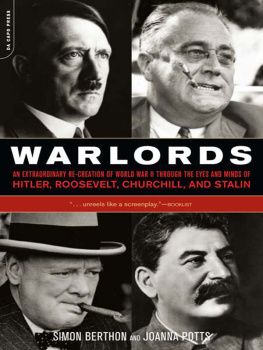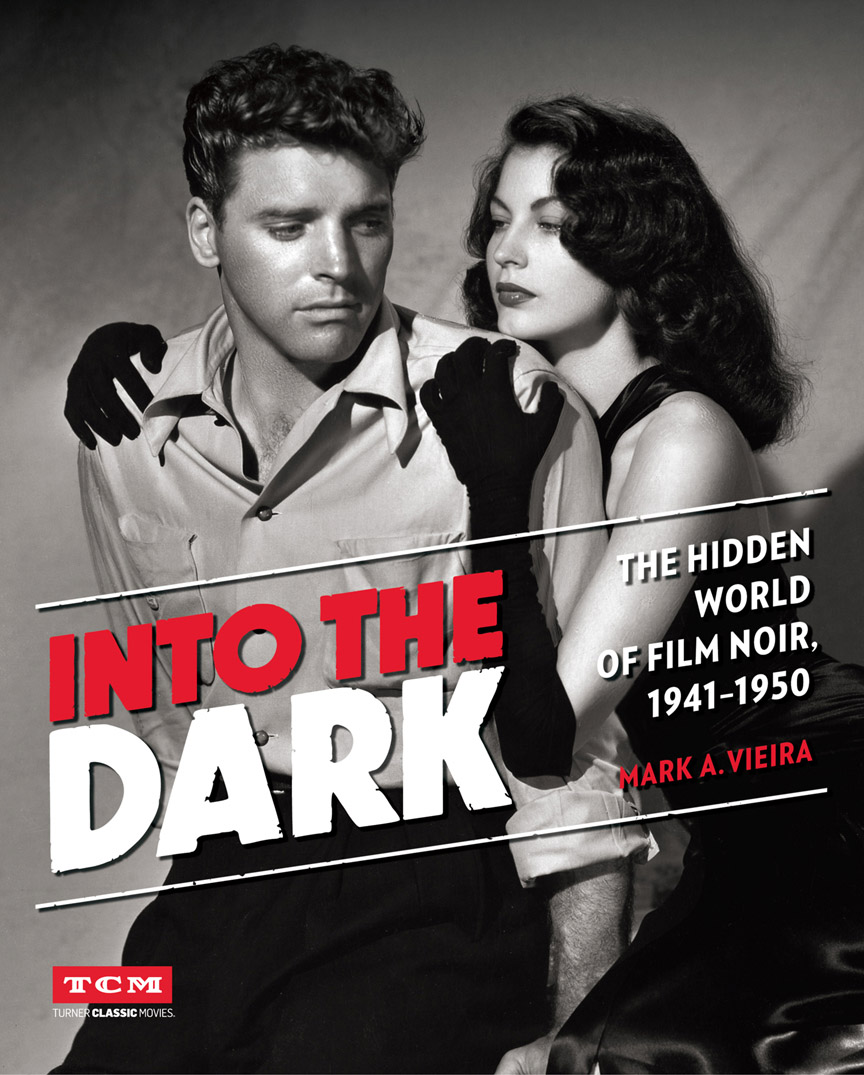

Jane Greer as Kathie Moffat in Jacques Tourneurs
Out of the Past.
To the memory of my parents, Alan and Eleanore Vieira. And to Dorothy Chambless and Ben Carbonetto.


Alan Mowbray and Victor Mature in a scene from H. Bruce Humberstones
I Wake Up Screaming. 2016 by Mark A. Vieira Published by Running Press, A Member of the Perseus Books Group All rights reserved under the Pan-American and International Copyright Conventions Printed in China
This book may not be reproduced in whole or in part, in any form or by any means, electronic or mechanical, including photocopying, recording, or by any information storage and retrieval system now known or hereafter invented, without written permission from the publisher. Books published by Running Press are available at special discounts for bulk purchases in the United States by corporations, institutions, and other organizations. 5000, or e-mail . 5000, or e-mail .
Library of Congress Control Number: 2015958587 E-book ISBN 978-0-7624-5806-6 9 8 7 6 5 4 3 2 1 Digit on the right indicates the number of this printing Designed by Jason Kayser Edited by Cindy De La Hoz Typography: Minion and Verlag Running Press Book Publishers 2300 Chestnut Street Philadelphia, PA 19103-4371 Visit us on the web! www.runningpress.com CONTENTS  Joan Crawford personifies the film noir heroine in Jean Negulescos Humoresque. Photograph by Eugene Richee. Table of Contents
Joan Crawford personifies the film noir heroine in Jean Negulescos Humoresque. Photograph by Eugene Richee. Table of Contents
Guide
BY EDDIE MULLER Back in 1997, when I was researching my first book on noir,
Dark City: The Lost World of Film Noir, the most invaluable reference works I found were industry trade journals from the 1940s, magazines such as
Motion Picture Herald, Exhibitors Trade Journal, and
Moving Picture World. They gave an insiders perspective on how a rapidly developing artistic movementspreading through Hollywood like an ominous and nameless black tidewas actually being sold to theater operators throughout America. In those pages I first learned that
films noira scholarly appellation that wouldnt be applied for another twenty or so yearswere originally labeled by the folks who produced them, crime thrillers and murder dramas. The tags werent applied indiscriminately: crime thrillers typically involved professional cops and robbers (think
Kiss of Death, The Asphalt Jungle, The Big Heat) while murder dramas usually dealt with guilty or innocent amateurs in over their heads (
Double Indemnity, The Postman Always Rings Twice, anything written by Cornell Woolrich). Its this practical side of Hollywood history, and especially noir, thats gotten short shrift among the literally hundreds of volumes dedicated to exploring and analyzing what I contend was Hollywoods only truly organic artistic movement. Hollywoods version of film noir was born of a particular place and time; it was a perfect storm of artistic foment, economic upheaval, and political backstabbing.
Plenty has been written about that. Less explored is the role the worker bees of the businessagents, publicists, exhibitors, criticshad on the movements rise and fall. With Into the Dark, Mark Vieira goes a long way toward balancing the scales, providing a You Are There chronology of events, detailing how the emergence of this new strain of cinema waslike all art movementssimultaneously embraced and attacked by the mainstream. Hes culled some wonderful archival snippets as illuminating signposts along the route: excerpts from Bosley Crowthers and Philip Scheuers reviews of Citizen Kane both read as if theyre reviewing a film noir, long before the movement started to coalesce. Orson Welless influence on the development of noir style has never been more pithily depicted. (Im especially pleased to see Phil Scheuer, one-time critic for the Los Angeles Times, acknowledged for his insightful and spot-on reportage of 1940s crime films and their significance to both the industry and culture.
He was Johnny-on-the-Spot when his East Coast colleague Crowther, pontificating from his lofty perch at the Paper of Record, was oblivious to it all. Mostly its fun to flip through these pages and sense the thrill this amazing array of film artistsincluding Vieiras beloved stills photographersexperienced producing the sexy and sinister style that would become known as noir. The book reminded me of many conversations I had with actresses Id profiled in Dark City Dames: The Wicked Women of Film Noirnone of whom knew the slightest thing about film noir but could vividly recall every detail of their work on Out of the Past, Force of Evil, The Prowler, Detour, The Set-Up, and Nightmare Alleyall classic examples of the form. But it was Claire Trevorthe Grande Dame of Film Noirwho put film theory versus film reality into the sharpest perspective, when I sought details about her starring role in one of the definitive noir films, Raw Deal: Honey, she sighed, I made so many of those pictures I cant tell one from the other. But Ill bet my bottom dollar I was the bad girl. EDDIE MULLER
Eddie Muller is known internationally as The Czar of Noir, both for his books on the subject and his work rescuing and restoring at-risk films as founder and president of the Film Noir Foundation. cities. cities.
A familiar face on Turner Classic Movies, Muller was programmer and host of TCMs 2015 Summer of Darkness, a nine-night festival of classic noir. He has lectured on the subject for the Smithsonian Institute, the Museum of Modern Art, Frances Institut Lumire and Cinematheque Franaise, among many other prestigious venues. He is coauthor of the national bestseller Tab Hunter Confidential and his crime novel, The Distance, was named Best First Novel by the Private Eye Writers of America.

W HAT IS FILM NOIR? Does anyone know? The definition of this genre differs from one scholar to the next. No one agrees on essential noir titles. Some say that 1940s
Stranger on the Third Floor was the first film noir; others that 1942s
Street of Chance was the first.
The Maltese Falcon is often cited as the first film noir, but I saw little relation to textbook noir such as
Out of the Past. I had read that a noir protagonist had to be alienated, obsessed, or doomed, yet none of these words describe Humphrey Bogart in that film, and certainly not Dick Powell in
Murder, My Sweet, the accepted kickoff of the noir cycle.
The Maltese Falcon is often cited as the first film noir, but I saw little relation to textbook noir such as










 Jane Greer as Kathie Moffat in Jacques Tourneurs Out of the Past.
Jane Greer as Kathie Moffat in Jacques Tourneurs Out of the Past. To the memory of my parents, Alan and Eleanore Vieira. And to Dorothy Chambless and Ben Carbonetto.
To the memory of my parents, Alan and Eleanore Vieira. And to Dorothy Chambless and Ben Carbonetto. 
 Alan Mowbray and Victor Mature in a scene from H. Bruce Humberstones I Wake Up Screaming. 2016 by Mark A. Vieira Published by Running Press, A Member of the Perseus Books Group All rights reserved under the Pan-American and International Copyright Conventions Printed in China This book may not be reproduced in whole or in part, in any form or by any means, electronic or mechanical, including photocopying, recording, or by any information storage and retrieval system now known or hereafter invented, without written permission from the publisher. Books published by Running Press are available at special discounts for bulk purchases in the United States by corporations, institutions, and other organizations. 5000, or e-mail . 5000, or e-mail .
Alan Mowbray and Victor Mature in a scene from H. Bruce Humberstones I Wake Up Screaming. 2016 by Mark A. Vieira Published by Running Press, A Member of the Perseus Books Group All rights reserved under the Pan-American and International Copyright Conventions Printed in China This book may not be reproduced in whole or in part, in any form or by any means, electronic or mechanical, including photocopying, recording, or by any information storage and retrieval system now known or hereafter invented, without written permission from the publisher. Books published by Running Press are available at special discounts for bulk purchases in the United States by corporations, institutions, and other organizations. 5000, or e-mail . 5000, or e-mail .  Joan Crawford personifies the film noir heroine in Jean Negulescos Humoresque. Photograph by Eugene Richee. Table of Contents
Joan Crawford personifies the film noir heroine in Jean Negulescos Humoresque. Photograph by Eugene Richee. Table of Contents